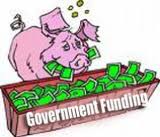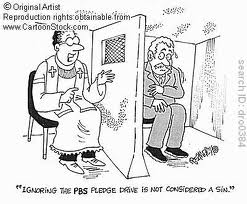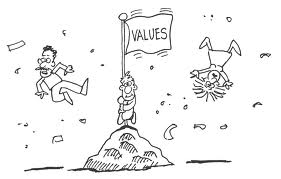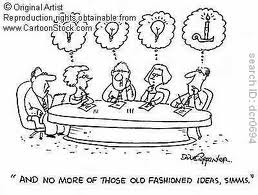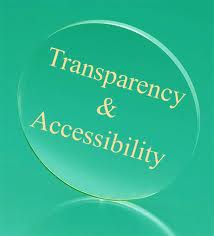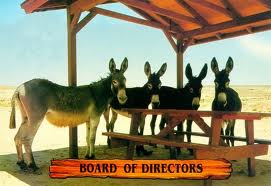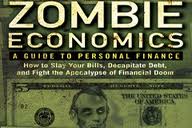 I used to jokingly say to various board members at my former agency that if our non-profit needed to get something done (e.g. organize a special event, put together a strategic plan, etc), then we should recruit a bunch of women to help us do it. I’d usually finish making my point by saying, if you want to talk an issue to death and get nothing done, then put a bunch of men in the room. (Note to readers: Whenever I said this it was always said “tongue in cheek” and I was kidding. Of course, I was only kidding slightly because I think there is some truth to it.)
I used to jokingly say to various board members at my former agency that if our non-profit needed to get something done (e.g. organize a special event, put together a strategic plan, etc), then we should recruit a bunch of women to help us do it. I’d usually finish making my point by saying, if you want to talk an issue to death and get nothing done, then put a bunch of men in the room. (Note to readers: Whenever I said this it was always said “tongue in cheek” and I was kidding. Of course, I was only kidding slightly because I think there is some truth to it.)
I share this story today because my good friend, Boys & Girls Club of Oshkosh Development Coordinator Anne Lemke, sent me a fabulous email a few days ago about “What Women Want” which is whitepaper written by Katherine Swank from Target Analytics, a Blackbaud Company. After reading the paper, I just could resist sharing a few of the highlights with you today:
- nearly half of the top wealth-holders in the United States are women,
- women have increased their combined wealth by more than fifty percent in the last 10-years, and
- women have a net worth of over $6 trillion.
 Katherine does a masterful job of profiling what an affluent woman looks like. I suggest you read the whitepaper and burn that picture into your head because it is surprising. In fact, you probably know a number of women who fit the profile. Having this profile picture burned into your non-profit brain is important because as Katherine says so perfectly:
Katherine does a masterful job of profiling what an affluent woman looks like. I suggest you read the whitepaper and burn that picture into your head because it is surprising. In fact, you probably know a number of women who fit the profile. Having this profile picture burned into your non-profit brain is important because as Katherine says so perfectly:
“Affluent women may also be identified by their willingness to both donate and volunteer at higher levels than their male counterparts. Women, on average, donate twice as much to charity and make three times the number of donations as men.”
So, some of you might be reading this post and thinking to yourself: “OK, I just need to start asking women for money and I’ll be fine.” If this is what you’re hearing me say, then please stop yourself! The reality is that women are different from men, and you’ll need to change your resource development strategies and tactics if you are going to appeal to this very powerful donor segment. Again, Katherine puts it best when she said:
“While I can’t claim to know what all women want in every situation, over twenty-five years in philanthropy has taught me that what women want is simple: to be asked their opinion and for their answers to be listened to and acted upon. They seek equality in the workplace, an ever-equal sharing of the ‘load’ from their male partners and counterparts, and to make the world a better place, both close to home and halfway around the world. Elementally, women want their lives to make a difference in the lives of others. To accomplish this through philanthropy makes women feel empowered.”
 Translated into language men might understand better: “You need to cultivate, solicit and steward women different from.” Oh heck, who am I kidding . . . let me translate this even more clearly for my non-profit male friends out there: “Go hire and recruit some women to help you with this incredible important and transformational shift that your non-profit agency needs to make.”
Translated into language men might understand better: “You need to cultivate, solicit and steward women different from.” Oh heck, who am I kidding . . . let me translate this even more clearly for my non-profit male friends out there: “Go hire and recruit some women to help you with this incredible important and transformational shift that your non-profit agency needs to make.”
I suspect this trend will change more than just your agency’s approach to resource development. It will also likely affect your board development, marketing, and volunteer recruitment & management efforts. Right?
Oh yeah . . . go download Katherine’s whitepaper and read it. Click here to get your copy. It really is a great read!
So, what are your thoughts? Are you already seeing this philanthropic trend in your community? How are you responding to it? Have you addressed it in your strategic plan or resource development plan? If so, how?
Please take a quick moment and share your thoughts using the comment box below. After all, we can all learn from each other.
Here’s to your health!
Erik Anderson
Founder & President, The Healthy Non-Profit LLC
www.thehealthynonprofit.com
erik@thehealthynonprofit.com
http://twitter.com/#!/eanderson847
http://www.facebook.com/eanderson847
http://www.linkedin.com/in/erikanderson847

